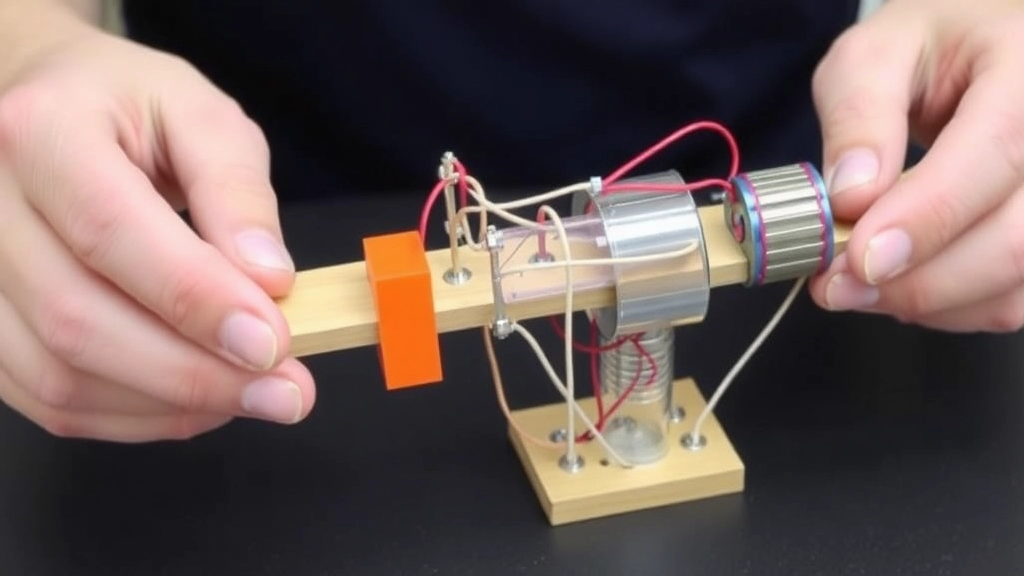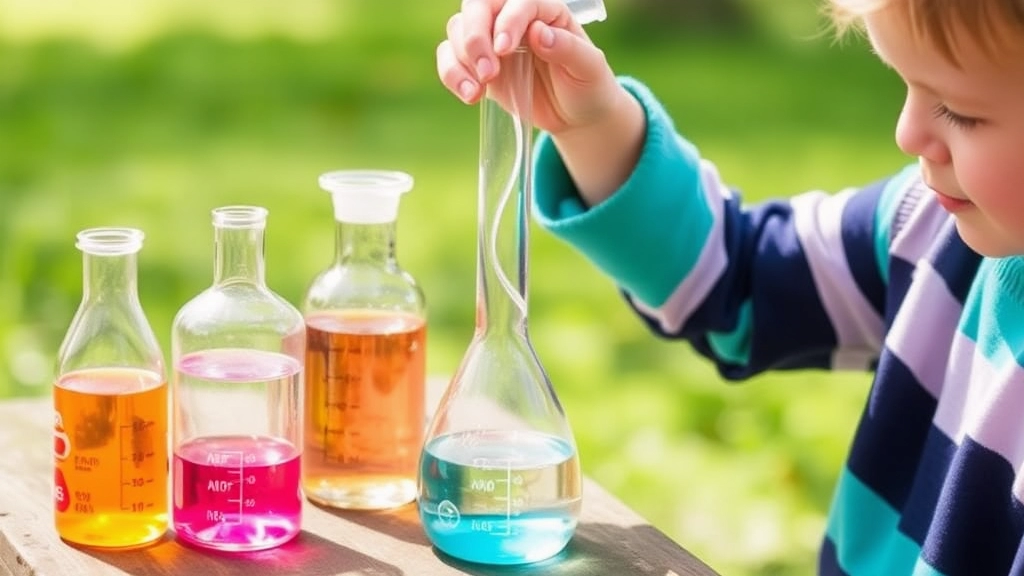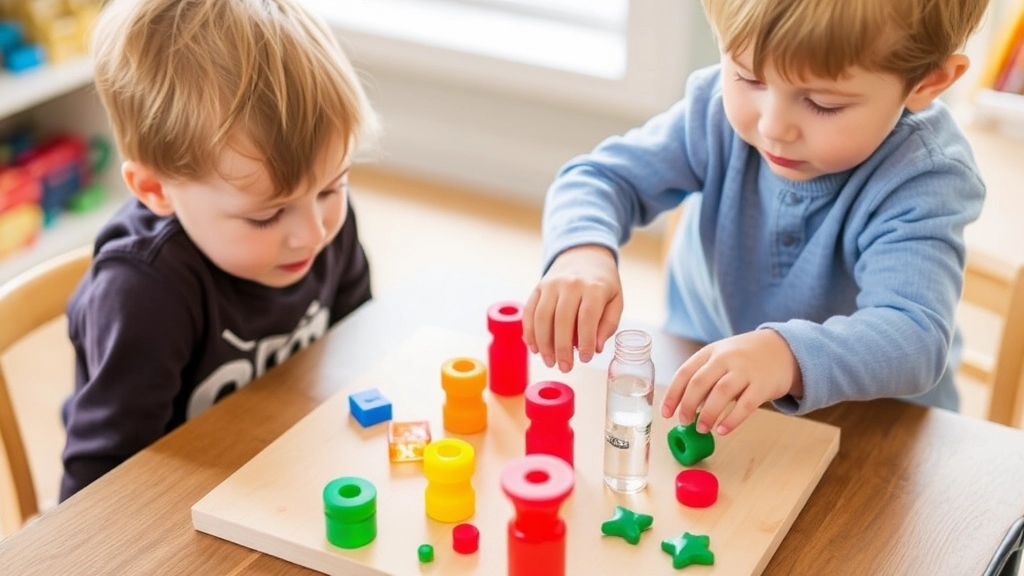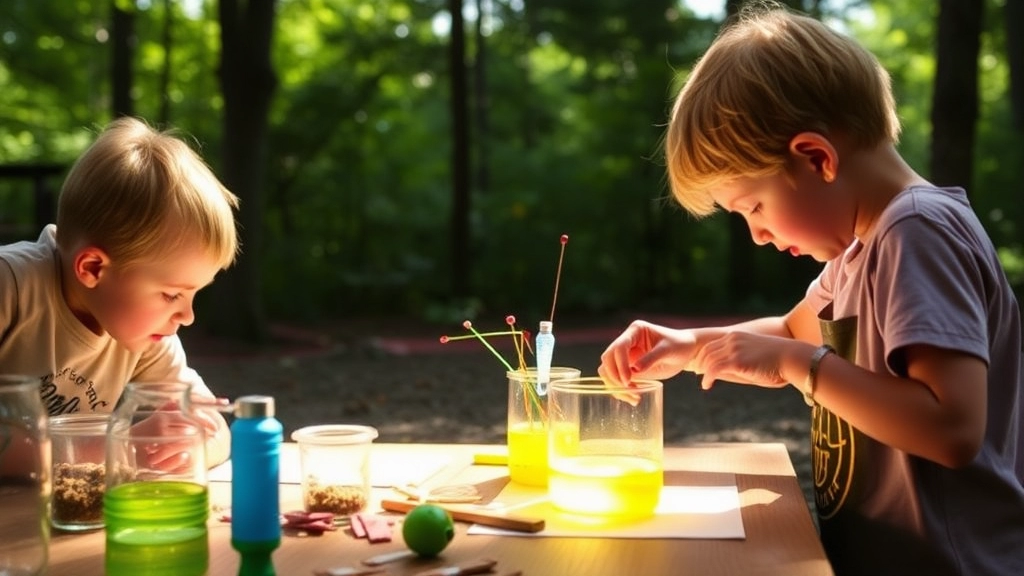STEM Activities for Summer Camp
As summer approaches, the quest to keep kids engaged and learning becomes paramount. Enter the world of Stem Activities For Summer Camp, where education meets excitement. From outdoor adventures to hands-on projects, this article explores a plethora of activities designed to spark curiosity and foster critical thinking. Whether it’s building rockets or exploring nature, these STEM activities promise a summer filled with fun and learning.
Outdoor STEM Activities
Discover outdoor STEM activities perfect for sunny days, simple engineering projects using household materials, and technology-focused tasks that blend the digital with the natural. Dive into nature-based science experiments, tackle summer math challenges, and experiment with physics and chemistry in engaging ways.
Endless Opportunities
With DIY astronomy projects and renewable energy challenges, this guide offers endless opportunities to make learning an unforgettable summer adventure.
Outdoor STEM Activities for Summer Fun
Ever wondered how to keep kids engaged and learning during the summer? Outdoor STEM activities are your answer. They’re fun, educational, and perfect for sunny days. Let’s dive into some cool ideas that blend play with learning.
Why Outdoor STEM?
Kids love being outside, and there’s no better way to harness that energy than with STEM activities. But why choose STEM? It’s all about science, technology, engineering, and maths. These fields encourage critical thinking and problem-solving, skills that are crucial for kids.
Real Concerns and Solutions
Parents often ask, “How can I make learning fun?” or “What if my child loses interest?” Here’s the thing: outdoor STEM activities are hands-on and interactive. They keep kids engaged because they’re not just watchingâthey’re doing.
Key Benefits:
- Active Learning: Kids learn better when they’re moving.
- Problem Solving: Activities challenge them to think creatively.
- Teamwork: Many projects involve working together, building social skills.
Top Outdoor STEM Activities
Nature Scavenger Hunt
Turn a simple walk into a learning adventure. Create a list of items to findâlike leaves, rocks, or insects. Kids can:
- Identify different species using a guidebook.
- Discuss ecosystems and how everything’s connected.
DIY Water Rockets
This one’s a blastâliterally. With just a bottle, some water, and a pump, you can launch a rocket sky-high. Discuss concepts like:
- Pressure and propulsion.
- Newton’s Third Law: For every action, there’s an equal and opposite reaction.
Solar Oven S’mores
Harness the power of the sun to make a tasty treat. Build a solar oven with a box, foil, and plastic wrap. Kids learn about:
- Solar energy and how it can be used.
- Heat absorption and reflection.
Keeping It Fresh and Engaging
Remember, the goal is to make learning enjoyable. Here’s how we keep it fresh:
Simple Engineering Projects with Household Materials

Ever looked around your house and thought, “What can I create with this stuff?”
You’re not alone.
We all want fun and easy projects that don’t require a trip to the shop.
Why Engineering Projects?
- Because they’re fun.
- They spark creativity.
- And they sneak in some learning.
Household Materials to Use:
- Cardboard: Think boxes, toilet rolls.
- Plastic Bottles: From soda to water bottles.
- String and Rubber Bands: For tension and movement.
- Paper Clips and Straws: Perfect for structure and support.
Project Ideas:
- Catapult Creation:
- Use a spoon, rubber bands, and a bit of cardboard.
- Launch marshmallows or small balls.
- Balloon-Powered Car:
- Cardboard for the body.
- Straws for axles.
- Bottle caps for wheels.
- Balloon for propulsion.
- Bridge Building:
- Use spaghetti or straws.
- Test strength with coins or small weights.
Why These Projects Work:
- They’re engaging.
- They teach basic physics and engineering concepts.
- They’re adaptable based on age and skill level.
Tips for Success:
- Keep it Simple: Start small and build up.
- Encourage Creativity: Let kids modify and personalise.
- Discuss the Science: Talk about why things work or don’t.
Real-Life Example:
Last summer, I tried the balloon-powered car with my nephew.
We used a bit too much tape, but the excitement on his face when it moved was priceless.
Linking to More Fun:
Check out our section on Physics Challenges for Team Building for more engaging activities.
Nature-Based Science Experiments
Ever wondered how to keep kids engaged with nature while sneaking in some science? Yeah, me too. It’s all about getting them outside, away from screens, and into the real world. Nature-based science experiments are the perfect way to do this. Let’s dive into some simple, fun, and educational activities.
Why Nature-Based Science?
Kids are naturally curious, right? They love exploring, asking questions, and discovering how things work. Nature is the ultimate playground for this. Plus, it’s a chance to learn without even realising it. Here’s why these experiments are a hit:
- Hands-on Learning: Kids learn best by doing. Nature offers endless opportunities.
- Real-World Connection: They can see science in action right in their backyard.
- Engagement: Outdoor activities keep them moving and curious.
Easy Nature Experiments to Try
1. Leaf Chromatography
Ever thought about how leaves change colour? This experiment is a classic and super easy.
- What You Need: Leaves, coffee filters, rubbing alcohol, jars.
- Steps:
- Crush the leaves and place them in a jar.
- Add rubbing alcohol to cover the leaves.
- Place a strip of coffee filter in the jar, ensuring one end is in the liquid.
- Watch as the colours separate over a few hours.
2. Mini Ecosystems
Building a mini ecosystem is like creating a tiny world. Kids love it!
- Materials: A clear container, soil, small plants, rocks, and a bit of water.
- How-To:
- Layer rocks and soil in the container.
- Plant your chosen greenery.
- Add a small amount of water and seal it.
- Observe how it sustains itself over time.
3. Bug Hotel
Insect lovers, this one’s for you. Creating a bug hotel is exciting and educational.
- Supplies: Sticks, leaves, pine cones, and a small wooden box.
- Instructions:
- Fill the box with natural materials.
- Place it in a quiet corner of the garden.
- Check regularly to see which bugs move in.
The Science Behind It
These experiments teach kids about photosynthesis, ecosystems, and biodiversity. They’re seeing science happen in real-time, which is way more impactful than reading about it in a book.
Keep It Fun and Fresh
Remember, the goal is to make learning enjoyable. Share stories about your own childhood adventures or ask them what they learned. Make it a conversation, not a lecture.
Nature-based science experiments are a brilliant way to connect kids with the environment while boosting their curiosity and knowledge. So, get out there and start exploring!
For more outdoor science fun, check out our sections on Ultimate Guide to Kids Summer Camps and Top Engineering Summer Camps for Teens.
Summer Math Challenges for Kids

Ever wondered how to keep your kids’ brains buzzing during the summer?
Yeah, me too.
Let’s dive into some summer math challenges that are not only fun but also keep those little grey cells active.
Why Summer Math Challenges?
Kids often lose a bit of their math mojo over the summer.
You don’t want them struggling when school starts again, right?
So, let’s make math a part of their summer fun.
Simple and Fun Math Challenges
- Math Scavenger Hunt
- Hide math problems around the garden.
- Let the kids solve each one to find the next clue.
- Keeps them moving and thinking.
- Cooking with Fractions
- Get them involved in the kitchen.
- Use recipes to teach fractions.
- Double or halve recipes to make it more challenging.
- Budgeting for a Day Out
- Give them a budget for a day trip.
- Let them plan how to spend it.
- They’ll learn about addition, subtraction, and even some basic economics.
Incorporate Math into Daily Activities
- Shopping Trips: Let them calculate the total cost and change.
- Board Games: Games like Monopoly are great for practising addition and subtraction.
- Gardening: Measure plant growth and calculate the area of garden beds.
Make it Competitive
Kids love a bit of competition.
- Math Races: Who can solve a set of problems the fastest?
- Math Puzzles: Set up weekly challenges with small prizes.
Real-Life Examples
Remember the time when we had to split a pizza among friends?
Perfect way to teach division.
Or when you’re filling up the car with petrol?
Great for practising multiplication and percentages.
Keep It Fresh
Change up the challenges every week.
- Geometry Week: Focus on shapes and angles.
- Algebra Week: Simple equations and problem-solving.
- Statistics Week: Collect data and create charts.
Technology-Focused Activities for Campers
Ever wondered how to keep kids engaged with technology while they’re out camping? It’s a real challenge, right? But guess what? We’ve got some killer ideas to make tech fun and educational, even when you’re far from the city lights. Let’s dive into some technology-focused activities for campers that will keep the young minds buzzing.
Why Tech in the Great Outdoors?
You might be thinking, âWhy bring tech into the wilderness?â Here’s the deal:
- Balance: It’s all about mixing the digital with the natural.
- Learning: Tech activities can teach kids valuable skills.
- Fun: Let’s face it, kids love gadgets.
Top Tech Activities for Campers
DIY Solar-Powered Gadgets
Solar power is a hot topic (pun intended). Why not get the kids to build their own solar-powered gadgets? It’s a hands-on way to learn about renewable energy.
- Solar Oven: Use a pizza box, aluminium foil, and plastic wrap to create a simple solar oven.
- Solar Charger: With a small solar panel, battery, and some wiring, you can make a charger for small devices.
Nature Photography with Smartphones
Kids love snapping pics. Turn it into a tech activity:
- Photo Scavenger Hunt: Create a list of nature items to find and photograph.
- Editing Challenge: Use free apps to edit and enhance their photos.
Coding in the Wild
Who says coding has to be indoors?
- Offline Coding Games: Use cards or blocks that represent code to solve puzzles.
- Nature-Themed Coding Projects: If you have a portable device, try coding a simple game or animation based on what you see around you.
GPS Treasure Hunt
Turn your camping trip into a high-tech treasure hunt.
- Geocaching: Use GPS to find hidden containers.
- Map Reading Skills: Teach kids to read maps and use a compass alongside GPS.
Stories from the Field
I remember a camping trip where we tried the solar oven project. The kids were sceptical at first, but when they saw the marshmallows melting for their s’mores, they were hooked. It’s moments like these that make learning stick.
Keeping It Fresh and Engaging
- Mix It Up: Don’t stick to one activity. Rotate between different tech projects.
- Stay Safe: Ensure all activities are safe and suitable for the age group.
- Stay Connected: Even in the wild, sometimes a bit of connectivity can enhance the experience. Use it wisely.
Fun Chemistry Experiments to Try Outdoors

Ever wondered how to make chemistry fun for the kids this summer?
You’re not alone.
Many parents are looking for ways to keep their children engaged and learning during the break.
Let’s dive into some fun chemistry experiments to try outdoors.
These activities are not just educational but also a blast!
Why Chemistry Experiments Outdoors?
Doing chemistry experiments outside has a few perks:
- Space: More room for bigger and messier experiments.
- Fresh Air: Keeps everyone out of the stuffy indoors.
- Safety: Less worry about spills and fumes in the house.
Easy and Fun Chemistry Experiments
Baking Soda and Vinegar Volcano
- Materials: Baking soda, vinegar, food colouring, a plastic bottle, and a tray.
- Steps:
- Place the bottle on the tray.
- Add baking soda and food colouring into the bottle.
- Pour in the vinegar and watch the eruption.
- Why it’s fun: Kids love the fizz and pop. Plus, it’s a great way to explain acid-base reactions.
Homemade Slime
- Materials: PVA glue, borax solution, food colouring.
- Steps:
- Mix glue and food colouring.
- Add borax solution slowly while stirring.
- Knead until it reaches the desired consistency.
- Why it’s fun: It’s gooey, stretchy, and a perfect hands-on activity to discuss polymers.
Menthos and Diet Coke Geyser
- Materials: A bottle of Diet Coke, a roll of Menthos.
- Steps:
- Open the Diet Coke.
- Drop in the Menthos quickly.
- Stand back and enjoy the geyser.
- Why it’s fun: The reaction is immediate and dramatic, illustrating gas release.
Safety Tips
- Always wear safety goggles.
- Conduct experiments in a well-ventilated area.
- Have a first-aid kit handy.
Real Questions and Worries
Q: What if my kid gets bored halfway?
A: Keep the experiments short and sweet. Switch it up if they lose interest.
Q: Is it safe to use household chemicals?
A: Yes, but always supervise and follow instructions.
Physics Challenges for Team Building
Ever wondered how to make physics fun and engaging for a group? Team-building activities that incorporate physics challenges are a fantastic way to get everyone involved, learning, and having a blast. Let’s dive into some hands-on physics challenges that will not only bring your team together but also make the principles of physics come alive.
Why Physics Challenges?
Physics isn’t just about equations and theories. It’s about understanding the world around us. By turning these concepts into team challenges, we can:
- Foster collaboration: Working together to solve problems.
- Enhance critical thinking: Applying physics principles in real-life scenarios.
- Boost engagement: Making learning fun and interactive.
Key Physics Challenges for Team Building
The Human Pendulum
What you’ll need:
- A sturdy rope
- A safe, open space
- A harness
How to play:
- One team member is strapped into a harness attached to the rope.
- The rest of the team pulls the rope to lift their teammate off the ground.
- The goal is to swing the “human pendulum” back and forth, observing the principles of pendulum motion.
Physics principles:
- Gravity
- Kinetic and potential energy
- Period of a pendulum
Egg Drop Challenge
What you’ll need:
- Eggs
- Various materials (straws, tape, paper, etc.)
How to play:
- Teams are given a limited amount of materials to build a structure that will protect an egg from breaking when dropped from a height.
- Each team designs and constructs their egg protector.
- Drop the eggs and see which team’s design holds up!
Physics principles:
- Impact force
- Momentum
- Energy absorption
Bridge Building Competition
What you’ll need:
- Popsicle sticks
- Glue
- Weights
How to play:
- Teams must build a bridge using only popsicle sticks and glue.
- The bridges are then tested by adding weights until they collapse.
- The team with the strongest bridge wins.
Physics principles:
- Tension and compression
- Structural integrity
- Load distribution
Catapult Construction
What you’ll need:
- Rubber bands
- Plastic spoons
- Popsicle sticks
- Marshmallows or small balls
How to play:
- Teams build a catapult using the provided materials.
- Each team tests their catapult by launching marshmallows at a target.
- The team with the most accurate catapult wins.
Physics principles:
- Projectile motion
- Elastic potential energy
- Force and distance
Real-Life Examples
Remember that time in school when we had to build a model bridge? It wasn’t just about the bridge; it was about understanding how real bridges work. These challenges do the same thing but on a much larger scale and with a lot more fun.
Think about the famous egg drop experiment. It’s been a staple in classrooms for years because it teaches so much about impact and force. Now imagine doing that with a group of friends or colleagues. The stakes are higher, and the fun is doubled.
Bringing It All Together
Physics challenges for team building aren’t just educational; they’re a blast. They take complex principles and turn them into hands-on activities that anyone can enjoy. Plus, they offer a great way to bond with your team, whether you’re in a classroom, at a summer camp, or just looking for a fun weekend activity.
For more exciting activities and ideas, check out our summer camp activity ideas and explore the ultimate guide to summer camp bonfire fun to make your summer unforgettable!
DIY Astronomy Projects for Stargazing Nights

Ever looked up at the night sky and wondered about the stars?
You’re not alone.
Astronomy can seem daunting, but trust me, it’s simpler than you think.
Here are some DIY astronomy projects to make your stargazing nights unforgettable.
Make Your Own Star Map
First up, star maps.
Super easy and super fun.
What you need:
- Black construction paper
- White chalk or a white pencil
- A star map template (you can find these online)
Steps:
- Lay out your black construction paper.
- Use the template to draw constellations with the white chalk.
- Label the stars if you’re feeling fancy.
Now, you’ve got your very own star map.
Build a Simple Telescope
Next, let’s talk telescopes.
No, you don’t need to buy a fancy one.
You can make a simple telescope at home.
What you need:
- Two magnifying glasses
- A cardboard tube
- Tape
Steps:
- Attach one magnifying glass to one end of the tube.
- Attach the other magnifying glass to the other end.
- Look through one end and adjust until you get a clear view.
Boom, you’ve got a basic telescope.
Create a Constellation Jar
Want to bring the stars indoors?
Try a constellation jar.
What you need:
- A mason jar
- Black construction paper
- A push pin
- A small LED light
Steps:
- Cut the black paper to fit inside the jar.
- Use the push pin to poke holes in the paper, mimicking constellations.
- Place the LED light inside the jar and put the paper around it.
Turn off the lights and enjoy your mini night sky.
Host a Stargazing Party
Why not make it social?
Invite friends and family for a stargazing night.
What to do:
- Share your star maps and telescopes.
- Use a stargazing app to identify constellations.
- Make it a potluck and bring snacks.
Track the Moon Phases
Here’s a simple yet rewarding project.
Track the moon phases over a month.
What you need:
- A notebook
- A pen
Steps:
- Observe the moon every night.
- Draw what you see and note the date.
- Compare your observations at the end of the month.
You’ll be amazed at how much you’ll learn.
Hands-on Robotics and Coding Activities
Are you looking to get your kids involved in something that’s not just fun but also incredibly educational this summer? Hands-on robotics and coding activities might just be the ticket. These activities are perfect for keeping young minds engaged and active, and they offer a fantastic way to introduce kids to the world of technology.
Why Robotics and Coding?
Let’s face it, the future is tech-driven. But how do you get your kids interested without overwhelming them? Robotics and coding offer a hands-on approach to learning that can make tech concepts more tangible and less intimidating. Plus, it’s a blast!
Getting Started with Robotics and Coding
First things first, you don’t need to break the bank to get started. Here are some simple ways to dive into robotics and coding using materials you might already have at home.
Basic Robotics Kits
You can find basic robotics kits online or in stores that are designed for beginners. These kits usually come with:
- Easy-to-follow instructions
- Pre-programmed microcontrollers
- Simple sensors and motors
These kits are great for building basic robots that can move, follow lines, or even avoid obstacles. They provide a solid foundation for understanding how robots work.
DIY Robotics Projects
Want to get a bit more creative? Try some DIY projects:
- Brushbot: Use a toothbrush head, a small motor, and a battery to create a simple vibrating robot.
- Paper Circuit: Create circuits on paper using conductive tape and small LEDs. It’s a fantastic way to understand electrical circuits.
Coding for Beginners
Coding might sound complicated, but it doesn’t have to be. Start with platforms designed for kids:
- Scratch: A visual programming language where kids can drag and drop code blocks to create animations, games, and stories.
- Blockly: Similar to Scratch but with more advanced options as your child progresses.
For more structured learning, consider enrolling your kids in specialized camps. Check out our NASA Summer Camps for a unique experience in space exploration and technology.
Combining Robotics and Coding
Once your kids are comfortable with the basics, it’s time to combine robotics and coding. Here’s how you can do it:
Simple Projects to Try
- Line-following Robot: Use sensors to make your robot follow a line. This project teaches programming logic and sensor integration.
- Obstacle-avoiding Robot: Program your robot to detect and avoid obstacles. This is a great way to understand how sensors and decision-making algorithms work together.
Keep It Fun and Real
Remember, the goal is to make learning fun. Share stories and examples to keep it engaging. For instance, talk about how coding and robotics are used in real-world applications like self-driving cars or space exploration.
For more ideas and inspiration, explore our Engaging Summer Camp Curriculum Guide to enhance your kids’ learning experience.
Real Concerns and Solutions
Worried about keeping your kids’ attention? Here are some tips:
Solar Power and Renewable Energy Challenges

Ever wondered how to keep the kids busy and learning this summer?
Let’s dive into solar power and renewable energy challenges.
These activities are not only educational but also a ton of fun.
And hey, they help the planet too.
Why Solar Power?
Solar power is a big deal right now.
Everyone’s talking about it.
But why?
- Renewable: It’s endless. The sun isn’t going anywhere.
- Eco-friendly: No pollution.
- Cost-effective: Once set up, it’s almost free energy.
Fun Challenges to Try
Solar Oven
Ever thought about cooking with the sun?
Here’s how:
- Materials: Pizza box, aluminium foil, plastic wrap, black paper.
- Steps: Line the box with foil, place black paper at the bottom, cover the opening with plastic wrap.
- Cook: Place food inside and let the sun do its magic.
Perfect for making s’mores.
Solar Powered Cars
Got some toy cars lying around?
Let’s make them solar-powered.
- Materials: Small solar panel, toy car, wires.
- Steps: Attach the solar panel to the car, connect it with wires.
- Race: See which car goes the fastest.
DIY Solar Water Heater
Heating water with the sun?
Yes, it’s possible.
- Materials: Black tubing, a bucket, and a sunny spot.
- Steps: Coil the tubing, place it in the sun, run water through it.
- Result: Warm water for washing up.
Renewable Energy Challenges
Not just solar, let’s explore other renewable energies.
- Wind Turbine: Build a small wind turbine using a motor and some blades.
- Hydro Power: Create a mini water wheel to generate energy.
A Real-Life Example
I remember last summer.
My nephew built a solar oven.
He was amazed.
Made his first batch of cookies without an electric oven.
His face lit up brighter than the sun that day.
Why It Matters
Teaching kids about renewable energy is crucial.
It’s our future.
And theirs.
Plus, it’s a great way to spend a summer day.
Water-Based STEM Experiments for Hot Days
Ever wondered how to keep the kids entertained and cool during those scorching summer days? Water-based STEM experiments are your answer. They’re not just fun but also educational, making them a win-win. Let’s dive right in and explore some exciting activities that’ll make your summer both refreshing and intellectually stimulating.
Why Water-Based Experiments?
First off, why water? Simple. It’s accessible, safe, and versatile. Plus, it’s the perfect way to beat the heat. Kids love playing with water, and when you add a STEM twist, you’re turning playtime into a learning experience.
Floating and Sinking: The Basics of Buoyancy
Ever tried to explain buoyancy to a kid? It’s a lot easier with a hands-on experiment. Here’s a simple one:
Materials Needed:
- A large bowl or tub filled with water
- Various household items (spoon, cork, plastic toy, stone, etc.)
Steps:
- Fill the tub with water.
- Ask the kids to predict which items will float and which will sink.
- Drop the items in one by one and observe the results.
Learning Points:
- Discuss why some items float while others sink.
- Introduce terms like density and buoyancy in simple language.
Water Filtration: Clean Water Science
Clean water is crucial, and this experiment shows how filtration works. It’s a great way to introduce environmental science concepts.
Materials Needed:
- Two-liter plastic bottle
- Sand, gravel, cotton balls, activated charcoal
- Dirty water (mix soil and water)
Steps:
- Cut the bottom off the plastic bottle.
- Layer the materials inside the bottle: cotton balls at the bottom, then charcoal, sand, and gravel.
- Pour the dirty water through the filter and watch as it comes out cleaner.
Learning Points:
- Explain how each layer helps in filtering the water.
- Discuss the importance of clean water and how filtration is used in real life.
Ice Melting Race: Speed Up with Science
This one’s a race, and it’s all about understanding how different substances affect the melting rate of ice.
Materials Needed:
- Ice cubes
- Salt, sugar, sand, and water
- Small bowls
Steps:
- Place an ice cube in each bowl.
- Sprinkle salt on one, sugar on another, sand on the third, and leave one as is.
- Time how long each ice cube takes to melt.
Learning Points:
- Discuss why salt makes ice melt faster.
- Introduce the concept of freezing point depression.
Water Rockets: Blast Off with Physics
For those who love a bit of a challenge, water rockets are perfect. They’re all about propulsion and Newton’s laws of motion.
Creative Art and Science Integration Activities

Ever thought, “How can I make learning fun for my kids this summer?”
You’re not alone.
Combining art and science can be the perfect solution.
It’s engaging, educational, and keeps them busy.
Here’s how you can do it.
Why Mix Art and Science?
Art and science together?
Absolutely.
Kids love creativity.
Science sparks curiosity.
Put them together, and you’ve got a winning combo.
Easy Art and Science Projects
Let’s dive into some simple projects that blend art and science.
No fancy materials needed.
Just stuff you probably already have at home.
1. Nature Collage
- Go on a nature walk.
- Collect leaves, flowers, and twigs.
- Use them to create a beautiful collage.
2. DIY Lava Lamps
- Fill a bottle with water and oil.
- Add food colouring.
- Drop in an Alka-Seltzer tablet.
- Watch the magic happen.
3. Solar-Powered Art
- Use solar paper.
- Place objects on it and leave it in the sun.
- Develop it in water.
- You’ve got yourself a piece of solar art.
Benefits of Art and Science Integration
Why should you bother?
Simple.
- Boosts Creativity: Kids think outside the box.
- Enhances Problem-Solving: They figure out how things work.
- Keeps Them Engaged: They’re having fun while learning.
Real Stories, Real Fun
I remember doing a lava lamp project with my niece.
Her eyes lit up when the bubbles started moving.
She asked, “How does that work?”
Explaining the science behind it was a moment of pure joy.
Quick Tips for Parents
- Keep It Simple: No need for complicated setups.
- Be Patient: Let them explore and make mistakes.
- Join In: Make it a bonding experience.
Internal Links
Want more ideas? Check out our Nature-Based Science Experiments.
For more hands-on projects, see our Simple Engineering Projects with Household Materials.
Engineering Competitions: Egg Drop and Bridge Building
Ever wondered how to keep kids entertained while sneaking in some education? Engineering competitions like the Egg Drop and Bridge Building challenges are the perfect blend of fun and learning. They’re not just about keeping kids busy; they’re about teaching them problem-solving, creativity, and teamwork.
Why Engineering Competitions?
Let’s face it: kids get bored easily, especially during the long summer holidays. These engineering challenges are a great way to keep their minds active. Plus, they’re super easy to set up with materials you probably already have at home.
The Egg Drop Challenge
Worried about the mess? Don’t be. The Egg Drop Challenge is a classic for a reason. It’s simple, engaging, and teaches kids about physics and materials science. Here’s how you can set it up:
- Gather Materials: You’ll need eggs, various household items like straws, paper, tape, and plastic bags.
- Design the Container: The aim is to create a container that will protect the egg from breaking when dropped from a height.
- Test and Iterate: Drop the containers from a predetermined height and see which designs work best. Encourage kids to tweak their designs based on what they learn.
Bridge Building Challenge
Ever tried building a bridge out of spaghetti? It’s harder than it sounds, but it’s a fantastic way to teach kids about engineering principles. Here’s a quick guide:
- Materials Needed: Spaghetti (or any other pasta), glue, and a small weight to test the strength of the bridge.
- Design Phase: Have kids sketch out their bridge designs first. This encourages planning and forethought.
- Construction: Let them build their bridges. This can take some time, but it’s all part of the learning process.
- Testing: Place the weight in the middle of the bridge and see if it holds. If it doesn’t, discuss what could be improved.
Real-World Skills
These competitions aren’t just for fun. They teach real-world skills like:
- Critical Thinking: Kids have to think about what materials and designs will work best.
- Teamwork: If you have multiple kids, get them to work in teams. It’s a great way to teach collaboration.
- Creativity: There’s no one right way to solve these problems, so kids can get creative with their solutions.
Pro Tips
- Set Clear Rules: Make sure everyone knows the rules before you start. This keeps things fair and organised.
- Safety First: Always supervise the kids, especially during the Egg Drop Challenge to prevent any accidents.
- Celebrate Successes: Whether the egg breaks or the bridge collapses, celebrate the effort. It’s all about learning and having fun.
If you’re looking for more educational activities, check out our Best STEM Education Summer Camps for Kids guide. For those interested in broader summer camp options, our Greenville County Summer Camps Ultimate Guide is a great resource.
Sensory and Tactile STEM Games for Preschoolers

Ever wondered how to keep your preschooler entertained while learning during summer?
Yeah, me too.
You want them to have fun, but you also want them to learn something valuable, right?
That’s where sensory and tactile STEM games come in.
These activities are perfect for those little hands and curious minds.
And the best part?
You can do them right in your backyard or living room.
Why Sensory and Tactile Games?
Preschoolers learn best through play.
They need to touch, feel, and explore.
Sensory and tactile games engage their senses and make learning fun.
Here’s how you can get started:
DIY Sensory Bins
Fill a bin with various materials like rice, beans, or sand.
Hide small toys or objects within.
Ask your child to find them.
Benefits:
- Enhances fine motor skills
- Encourages problem-solving
Nature Scavenger Hunt
Create a list of items found in nature: leaves, rocks, flowers.
Head outside and let your child explore.
Benefits:
- Promotes curiosity
- Teaches about nature
Water Play
Fill a shallow tub with water.
Add cups, spoons, and small toys.
Let your child splash and play.
Benefits:
- Improves hand-eye coordination
- Introduces basic concepts of volume and buoyancy
Play Dough Creations
Make or buy play dough.
Challenge your child to create shapes, animals, or even letters.
Benefits:
- Develops creativity
- Strengthens hand muscles
Bubble Science
Mix water, dish soap, and a bit of glycerin.
Use a wand to blow bubbles.
Experiment with different sizes and shapes.
Benefits:
- Teaches basic chemistry
- Enhances observation skills
Texture Walk
Lay out different textured materials like bubble wrap, sandpaper, and fabric.
Have your child walk on them barefoot.
Benefits:
- Stimulates sensory receptors
- Encourages descriptive language
Real-Life Example
I remember doing a nature scavenger hunt with my niece.
She was so excited to find a shiny rock.
We ended up talking about minerals and where rocks come from.
She learned something new, and we had a blast.
Keep It Fresh
Switch up the materials and activities regularly.
Kids get bored easily.
Keep them engaged by introducing new textures, objects, and challenges.
Internal Linking Opportunity:
For more outdoor STEM activities, check out our section on Outdoor STEM Activities for Summer Fun.
Exploring Gravity and Motion with DIY Ziplines
Ever wondered how gravity works in real life?
Or how you can explain motion to your kids without boring them to tears?
Well, DIY ziplines are your answer.
They’re simple, fun, and educational.
Plus, they’re a great way to spend a sunny afternoon.
What You’ll Need
Before we dive in, let’s gather some household items:
- String or fishing line: This will be your zipline.
- A small toy or action figure: This will be your zipline rider.
- Tape or a clip: To attach your rider to the line.
- Two anchor points: Trees, chairs, or even doorknobs work well.
Setting Up Your Zipline
- Find your anchor points.
- Make sure one is higher than the other to create an incline.
- This incline is crucial for gravity to do its job.
- Attach the string to the higher point.
- Ensure it’s secure. No one wants a zipline fail.
- Stretch the string to the lower point.
- Keep it taut but not overly tight.
- Attach your toy.
- Use tape or a clip to secure it to the string.
Testing Gravity and Motion
Now, here’s where the fun begins.
Let your toy go from the higher point.
Watch as it zips down the line.
You’ll see gravity pulling it down while the incline controls the speed.
Want to add some science talk?
Explain how gravity is a force pulling the toy towards the Earth.
The steeper the incline, the faster the toy moves.
Making It a Learning Experience
Turn it into a mini-experiment:
- Change the incline: See how different angles affect speed.
- Use different weights: How does a heavier toy compare to a lighter one?
- Test different strings: Does the thickness or material of the string make a difference?
Real-Life Examples
Think about ziplining in an adventure park.
Ever noticed how they adjust the incline for different rides?
Or how they use different ropes for different weights?
These are the same principles you’re exploring with your DIY zipline.
Why This Activity Rocks
- Engaging: Kids love the hands-on experience.
- Educational: Teaches basic physics concepts like gravity and motion.
- Simple: Uses items you already have at home.
Exploring gravity and motion with DIY ziplines is a win-win.
It’s fun, educational, and super easy to set up.
So next time you’re looking for a summer activity, give this a try.
You’ll get to see science in action right in your backyard.
And trust me, the kids will be talking about it for days.
Ready to dive into more outdoor STEM activities? Check out our section on summer camp themes and ideas for kids for more ideas.
Keep it real, keep it fresh, and keep exploring.
For more tips on making your summer camp experience unforgettable, visit our guide on exciting summer camp activities.
FAQs on STEM Activities for Summer Camp
What are some simple engineering projects for kids using household materials?
Simple engineering projects can include creating catapults with spoons and rubber bands, balloon-powered cars using cardboard and straws, and building bridges with spaghetti or straws. These projects are fun, spark creativity, and teach basic physics and engineering concepts.
Why should I incorporate engineering projects into summer camp activities?
Engineering projects are engaging and educational. They not only entertain kids but also sneak in some learning, teaching them problem-solving and critical thinking skills.
What household materials can be used for engineering projects?
Common household materials like cardboard, plastic bottles, string, rubber bands, paper clips, and straws can be used for various engineering projects. These materials are easily accessible and versatile.
How can I keep my kids’ math skills sharp during the summer?
Engage your kids in fun math challenges like math scavenger hunts, cooking with fractions, and budgeting for day trips. Incorporating math into daily activities like shopping trips and board games can also keep their skills sharp.
What are some fun chemistry experiments to try outdoors?
Outdoor chemistry experiments can include baking soda and vinegar volcanoes, homemade slime, and Menthos and Diet Coke geysers. These activities are educational, safe, and a lot of fun.
Why should chemistry experiments be conducted outdoors?
Conducting chemistry experiments outdoors provides more space, fresh air, and safety from spills and fumes. It also allows for bigger and messier experiments.
What are some easy DIY astronomy projects for stargazing nights?
Easy DIY astronomy projects include making your own star map, building a simple telescope with magnifying glasses and a cardboard tube, creating a constellation jar, and tracking moon phases over a month.
How can I teach kids about solar power and renewable energy?
You can teach kids about solar power by engaging them in fun challenges like building a solar oven, creating solar-powered cars, and making a DIY solar water heater. Exploring other renewable energies like wind turbines and hydro power can also be educational.
What are some creative art and science integration activities?
Combining art and science can include projects like nature collages, DIY lava lamps, and solar-powered art. These activities boost creativity, enhance problem-solving skills, and keep kids engaged.
What are sensory and tactile STEM games for preschoolers?
Sensory and tactile STEM games for preschoolers include DIY sensory bins, nature scavenger hunts, water play, play dough creations, bubble science, and texture walks. These activities engage their senses and make learning fun.
Why are sensory and tactile games important for preschoolers?
Preschoolers learn best through play, and sensory and tactile games engage their senses, enhance fine motor skills, promote curiosity, and introduce basic scientific and mathematical concepts in a fun way.

